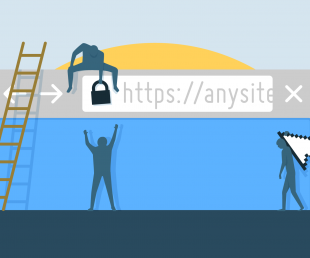One of the financial strategies that has received a lot of attention recently is automation. The idea behind automating your finances is that you can set up your finances to mostly manage themselves. This works especially well because of the technology we have today to set up automatic payments and transfers.
My finances are mostly automated, and I prefer it that way. Not having to think about the mundane tasks makes it easier to ensure that my bills are paid when I’m out of town, and it also means that I don’t have to think about setting aside money for my retirement account or for other savings accounts.
If you want to automate your personal finances, carefully consider the situation before moving forward. While automation can be a great thing, it doesn’t always work in your favor. If you aren’t careful, you could end up overdrawing your account. Before you automate, here are a few things you should consider:
1. Is Your Budget Under Control?
Your first step is to make sure your budget is under control. Do you live within your means? Do you have enough coming in to take care of your expenses? If you automate before your budget is in hand, you could end up overdrawing your account on a regular basis. Make sure that the spending is in line with income before you decide to automate your finances.
2. What’s the Timing on Your Bills?
Another consideration is the timing related to when your bills are due. When you choose automatic payments, you usually pick a day to have the money taken from your account. Consider your pay schedule before you pick that date. If you are paid twice a month, you want to make sure that some bills come out earlier in the month, and others come out during a different pay period. Timing is important when you automate your finances.
When I chose the dates for my automatic payments, I made it a point to choose dates that were far enough into the month to account for the fact that there are times some of my clients pay late. Knowing there is a buffer gives me peace of mind. Plus, I know that the money is more likely to be available when it’s time for the car payment.
3. Use Back Up Systems to Smooth Cash Flow
While some of my bills, like the car loan payment and the student loan payment, have to come from my checking account, other bills can be paid with credit card. I try to put as much as possible on the credit card, including my Internet bill and my cell phone bill. That way, I don’t have to worry as much about timing. I can just pay off the credit card when I receive payment.
I also have a personal line of credit attached to my checking account. While it’s not something that is used often, it is available for times when the timing might be off between when I receive pay from clients and when bills are due. It’s better than getting an overdraft fee, and I don’t end up paying interest if I pay the balance off quickly.
Automating your finances requires thought and planning. Make sure you are ready and have the proper systems in place before you decide to automate.
This article was written by MoneyNing from MoneyNing and was licensed from NewsCred, Inc. Santander Bank does not provide financial, tax or legal advice and the information contained in this article does not constitute tax, legal or financial advice. Santander Bank does not make any claims, promises or guarantees about the accuracy, completeness, or adequacy of the information contained in this article. Readers should consult their own attorneys or other tax advisors regarding any financial strategies mentioned in this article. These materials are for informational purposes only and do not necessarily reflect the views or endorsement of Santander Bank.
![]()



